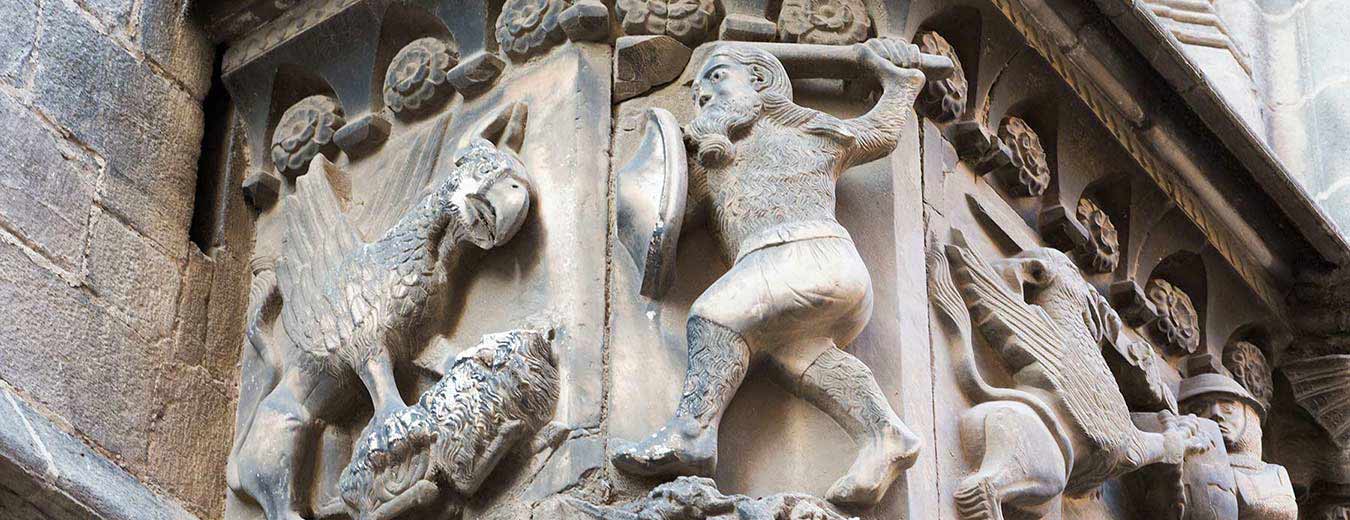

If you visit the Gothic Quarter (Barri Gòtic) of Barcelona, you will find one figure in particular in the streets, in paintings and fountains: a knight raising his sword against a dragon. The knight is Saint George (in Catalan Sant Jordi), the patron saint of Barcelona. In the Catalan version of the story about Saint George the village is called Montblanc, but the rest of the story is like the original: the evil dragon oppresses a local village and just in the moment when it is ready to devour the local princess, Sant Jordi appears to rescue her from the dragon's claws.
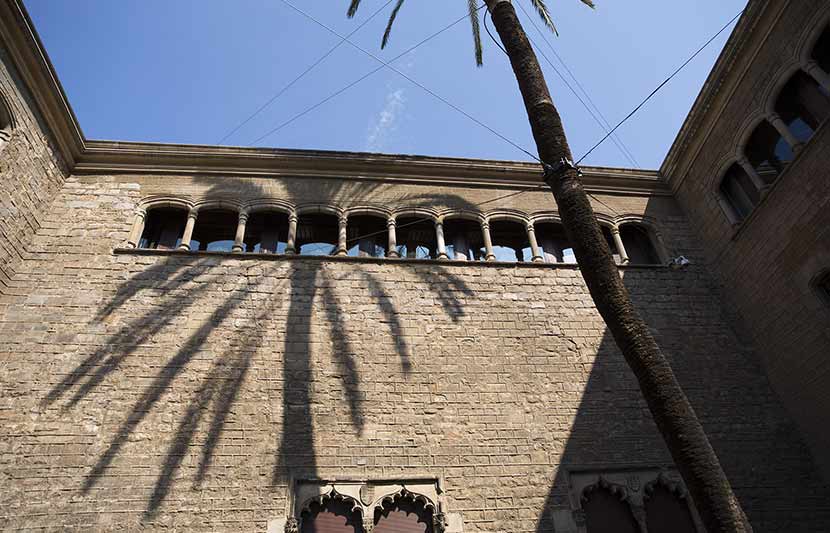
The myth of St. George can be found in other European countries and Saint George is a patron saint in many countries, but the myth is especially popular among the Catalans. The reason may be that the Catalans have seen the story as an allegorical tale of Catalonia's own history: the evil dragon represents the tyranny of the central power and Saint George represents the local hero against the hegemony of Castile.
The forerunner of modern Catalonia sees the light in the early middle ages with the establishment of the Catalan counties. Aften Charlemagne conquered Barcelona, the Frankish Kings During created Marca Hispanica, a territory that would defend them against the threat from the south: the Moors.
Here they installed a number of counts that should prevent the Saracen expansion and their raids to the north. The Saracens had moved over the Strait of Gibraltar in 711. Between 717 and 718 they fought their way through northern Spain and gained control over cities like Tarragona and Barcelona. The Moors continued north and in 720 they conquered Roussillon, Narbonne and Carcassonne. In 725 they reached Septimania. Not until Poitiers south of Paris in 732 the Moors were defeated by the troops of Charles Martel.
In 777 the Saracens leader, Sulayman al-Arabi, signed a pact with the Carolingian leader Charlemagne. The Franks would from now on help the Moors to defend themselves against hostile tribes. In turn Sulayman got possessions in Catalonia. Towards the end of the century the Carolingians undertook a series of attacks on the Saracens’ possessions, but also suffered several defeats. None the less they succeeded in taking Barcelona on Easter Saturday in 801, and so the city's first count, Bera, was installed.
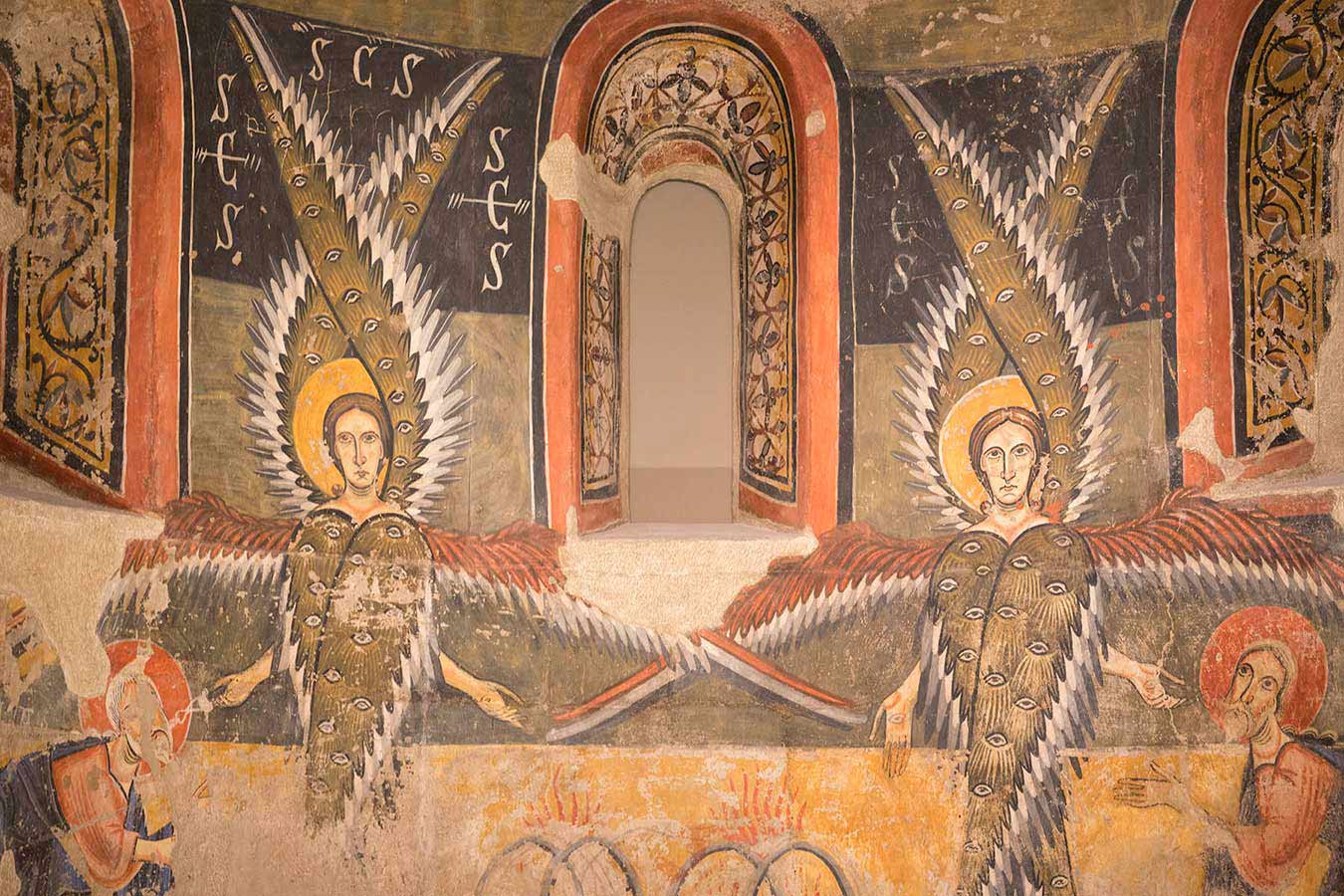
Towards the end of the 9th century, the count Guifré el Pilós (Wilfred the Hairy) united several Catalan counties and became the first independent Count of Catalonia. Wilfred the Hairy built several important romanesque churches at the end of the 9th century in Catalonia. Among these the church of Santa María de Ripoll, where the count is buried (at the northern aisle you can see a coffin with the name of Wilfred the Hairy).
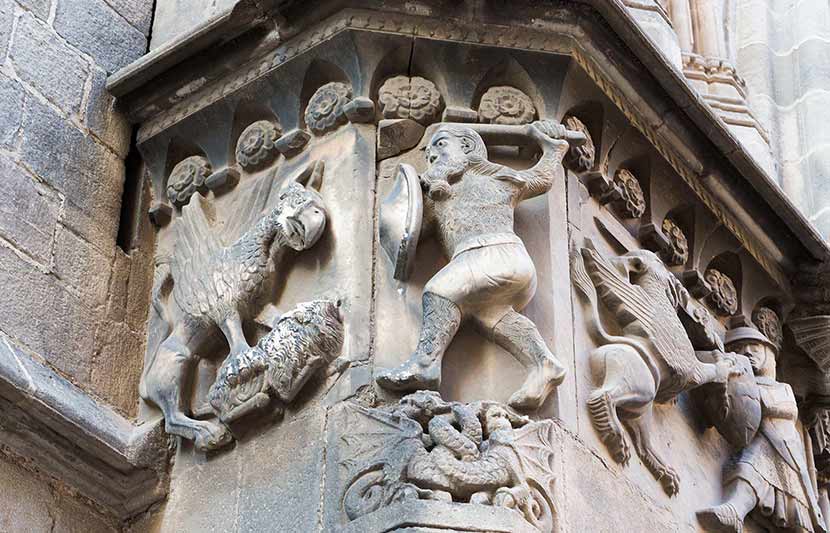
At the northern entrance to the cathedral of Barcelona (Catedral de la Santa Creu i Santa Eulàlia – in short La Seu), high up on the corner turning towards the sea, a small high-relief can be seen. Here you will be able to see two people fighting a dragon. One has a helmet: this is Saint George, as you might expect. However, the other one looks similar to Saint George, but if you take a close look on the body you will see a hairy chest, a beard that is tied up and legs covered in hair. This is Wilfred the Hairy, the Count of Barcelona.
In 897 the Saracens penetrated Barcelona's city walls led by Llip ibn Muhammad. On this event Guifré el Pilós was killed. Legend has it that the four stripes on the Catalan flag (la Senyera) stems from Wilfred the Hairy’s blood.
From this period on, the distance between the counts and the Carolingian monarchs increased gradually, especially after the Arabs during a raid in Northern Catalonia burnt down Barcelona. This event made it clear to the Catalans that they could no longer expect the Frankish empire to protect them, neither from the Normans nor the Moors. And so gradually their independency grew.
At the beginning of the new millennium Catalonia and especially Barcelona came to play a key role in the Mediterranean. Commerce brought wealth to the region and the expansion to the east during the 13th and 14th centuries made Catalan language the most widely spoken in the Mediterranean ports together with Arabic - long before French, Italian and Spanish became mayor languages.
The wealth produced by commerce was invested in the construction of new imposing buildings in the new building style of the period: gothic style. Many of them still standing today. The core of the Barri Gòtic in the center of Barcelona was built in the 14th Century. Among the most important buildings from the period are the three so called great Gothic churches, La Seu, Santa María del Pi and Santa María del Mar.
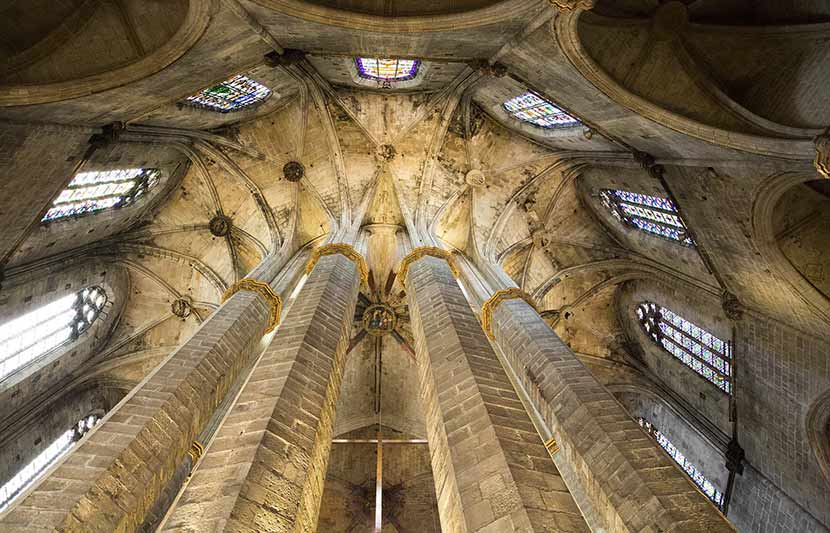
A century the real heyday of Barcelona started under the reign of Jaume I (1208-1276). Jaume I started the expansion in the Mediterranean conquering Mallorca when he was just 21 years old. Mallorca that had been controlled by the moors had been a problem for the Catalan because pirates on the island made it impossible to do commerce with the eastern Mediterranean. In 1229 Jaume I gathered a fleet of up to 500 French and Catalan ships - the most impressive fleet seen in the western Mediterranean. On New Year's Eve 1229 he and his army succeeded in conquering Palma on Mallorca. The conquest of Mallorca put an end to piracy, and so gave Catalonia control over an important part of the Mediterranean and started Catalan commerce.
Jaume I is also famous for his chronicle Llibre del feyts (“Book of Deeds”), one of the litterary masterpieces of the period written in vernacular Catalan. Jaume I also founded the political institution Consell de Cent in 1249, the forerunner for the town hall of Barcelona.
Before dying, Jaume I divided the kingdom between his two sons: Pere II got Catalonia, Aragon and Valencia and Jaume II got the Balearic Islands. Later Pere II married Constanza of Sicily and so Catalonia gained control of the largest island in the Mediterranean. Over the next centuries both Catalan and Sicilian were official languages on Sicily.
After the uprising in Sicily in 1282 (the so called Sicilian Vespers), Catalonia helped the Sicilian population defend itself against Charles I of Anjou and his troops. The Catalan king, Pere III, sent his fleet led by Roger de Lloria to Sicily and gained control over the island.
Expansion continued during the 14th century. In 1311 Roger de Flor went to Constantinople with 8,000 men and founded duchies in both Athens and Neopatria. Later in the century the Catalan kingdom got in trouble. The shortage of wheat, a locust plague in 1358, and an earthquake in 1373 killed over half the population.
Martín I “the humane” (Martí el Humà) was the last king reigning Catalonia from Catalonia. He died in 1410 leaving no heir to the throne and thus began a period of instability. For two years Catalonia had no king, but finally Benedict XIII (The Anti-Pope in Avignon) elected a new king in a conclave. The Castilian Ferdinand de Antequera (1380-1416, son of Juan I of Castile and Elinor of Aragon) was elected in favor of the two obvious candidates, Jaume d'Urgell and Lluís of Calabria.
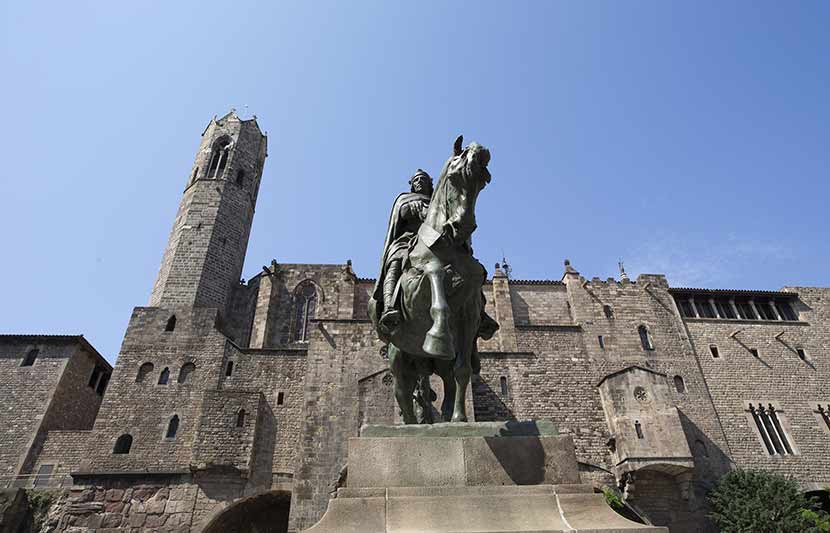
This episode, called the Compromise of Casp (Casp was the town where Benedict XIII and his committee gathered), is a key moment in Catalan history, since Ferdinand de Antequera is the first in a series of Castilians to govern Catalonia.
Ferdinand de Antequera died in Igualada in 1416, and a chaotic period started. Later in the century, the king Joan II imprisoned his own son which led to a constitutional crisis that ended in civil war (lasting from 1462 to 1472).The conquest of Granada made it possible for Ferdinand and Isabella to embark upon another adventure: the apparently mad idea of Christoffer Columbus to sail west to find a shortcut to India. The monarchs supplied Columbus with three ships and he sailed out of Cadiz on August 3rd 1492.
The Catholic monarchs are also famous for the expulsion of the Jews and Muslims from the Iberian Peninsula and the installation of the Spanish Inquisition. All Jews who could afford it moved to other countries but more than 300,000 were killed.
With the outbreak of war between France and the Austrian Hapsburgs in 1635 Catalonia became a battleground. Catalans chose to welcome the French, but Olivares now conducted an attack on the Franks from the Catalan territory.
In 1639 the Franks took the Salses castle of Roussillon, but Olivares' troops besieged the castle, and the French had to abandon the defense 6 months later. The Catalans, led by the general Pau Claris, attacked Olivares' troops, provoking the beginning of the Catalan Revolt War (la Guerra del Segadors) which lasted from 1642 to 1652. The Catalans teamed up with the French, and Catalan self-government (la Generalitat) proclaimed Louis XIII of France to be the king of Catalonia.
Together they defeated the Hapsburg army at Montjuïc, but in 1648 the French left Catalonia and took the Roussillon area (in the southern part of modern France) that was belonging to Catalonia. Without the French, Catalonia could not stand against Philip IV's troops, and in 1652 they surrendered. The national anthem of Catalonia, Els Segadors, written in the end of the 19th century is about the Catalan Revolt War.
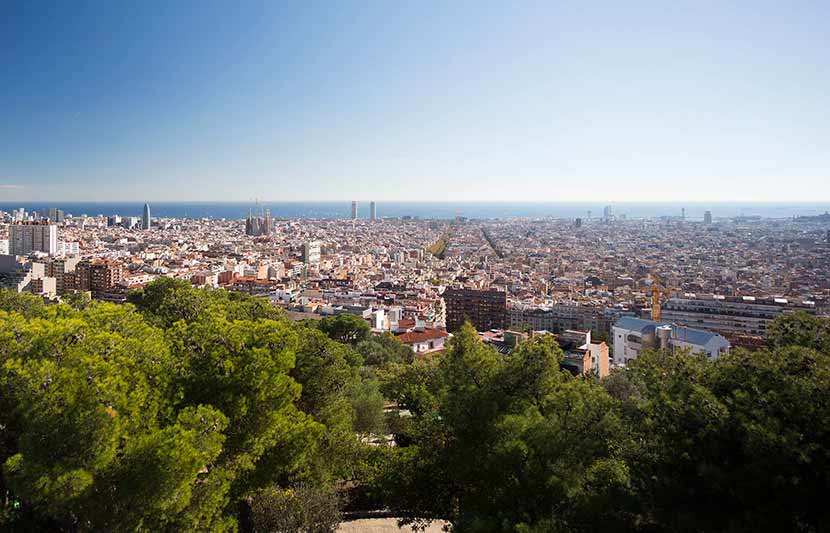
Another war of crucial significance to the history of Catalonia was The War of the Spanish Succession (1701-1714), which also had a lasting impact on the rest of Spain and Europe. After the war, Spain’s position as the strongest super power in Europe was over once and for all.
For Catalonia the consequences of the war were devastating. The war ended with the troops of Philippe V invading Barcelona on September 11th 1714 and soon after, the old Catalan political institutions (that had survived under the Habsburg kings in Madrid) were abolished and so, the Consell de Cent and Les Corts Catalanes ceased to exist.
Charles II (the bewitched, in Spanish Carlos II) died in 1700 without any heir to the throne. The king's death provoked that all the powers of Europe, and especially England, Holland, Austria and France, tried to get a hold on the Spanish possessions.
Three candidates presented themselves: Joseph Ferdinand, electoral prince of Bavaria (supported by England and Holland), the Austrian Archduke Charles, son of the German-Roman Emperor, Leopold I (supported by Austria) and Philippe d'Anjou, grandson of the Sun King Louis XIV (supported by France).
Already before the death of Charles II, England, Holland and Austria had signed a preliminary agreement to share the Spanish possessions between them. But Charles II discovered the conspiracy and chose the Austrian king, Joseph Ferdinand as his successor. Josef Ferdinand was installed as Spanish king in 1698, but died already the following year.
Carlos II was still alive, and now only Philippe d’Anjou and Charles of Austria were left as candidates. Charles II appointed Philippe d'Anjou as heir to the throne, and when he died (1700) the Frenchman could travel to Madrid and claim the throne. But Austria and England opposed his coronation. England, Holland, Austria and Savoy declared Philippe d’Anjou war and wanted to replace him with Charles of Austria.
In 1717 all Catalan universities were closed, a property tax of 10 % and an income tax of 8.5% were installed. Philippe chose José Patiño as governor of Catalonia and Patiño described the Catalans as freedom-seeking and happy about weapons. To defend the King’s interests Patiño had a huge defense wall and several citadels (la Ciutadella and the castle on Montjuïc) erected - all paid for by the local taxpayers.
One of the period's literary masterpieces was Jacint Verdaguer L'Atlantida (1878), the Catalan culture's answer to Odyssey, a poetic tale of Catalonian origin built on both Greek and Roman myth. But it is in architecture that la Renaixença gets its main expression with architects like Gaudí, Puig i Cadafalch and Domènech i Montaner.
The modernism (modernisme in Catalan, modernismo in Spanish), the style that formed architecture, was marked by references to Catalonia's history, the use of the region's traditional materials but also from inspirations from the Northern European Art Nouveau/Jugendstyle.
Casa Batlló (1904-1906) by Antoni Gaudí has special interest. Gaudí tells the story about Sant Jordi and the dragon on the facade of the building: the facade is converted in to an allergy where the balconies are the dead people in the village eaten by the dragon, the coulered tiles are the stomach of the dragon, the roof is the dragons back and the cross at the top of the building represents the Christian knigh Sant Jordi.
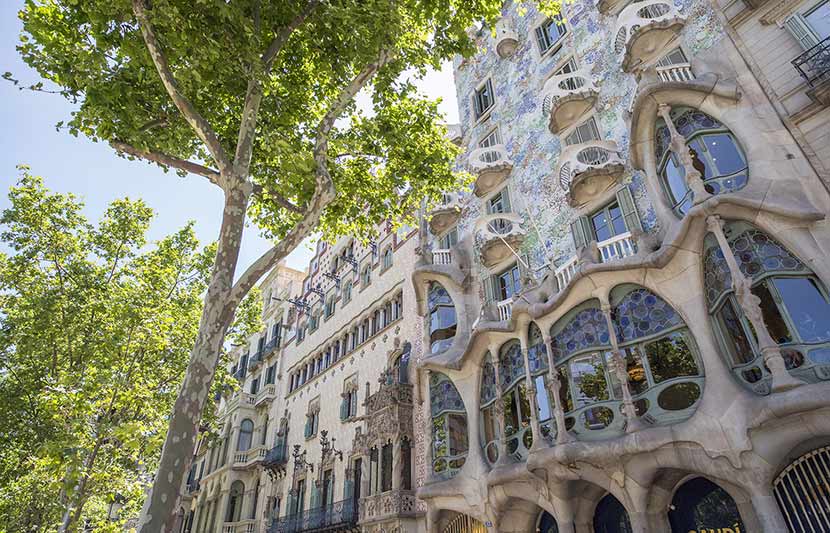
In this period, when it was prohibited to use Catalan names, the Dutch footballer (and later coach) of FC Barcelona, Johan Cruyff, chose to baptize his son using a Catalan name, the name of the legendary Catalan knight, Jordi. And so, maybe without realizing the importance, Johan Cruyff became a symbol of Catalan nationalism and so the local knight Jordi had come back to life to confront the dragon.
After Franco's death (in 1975), Spain and especially Catalonia underwent enormous changes. The most important event was the organization of the Olympic Games in 1992, that meant a profound change for the whole region. Since then, words like innovation, urban planning and modern architecture, design and development have been inextricably linked with Barcelona.
Today politics in Catalonia is dominated by debates about independency. When visitors come to Catalonia the Catalans are quick to remind visitors that even though you are in Spain you are primarily in Catalonia, a region with its own customs and traditions, much different from those of central Spain.
A large proportion of the Catalan population wants greater autonomy, but only less than half want a full independency from Spain. It is often discussed whether or not it would be beneficial for Catalonia to be indenpendant. We recommend articles from Reuters and Wikipedia to get more insigt in economical, cultural and political questions about modern Catalonia.